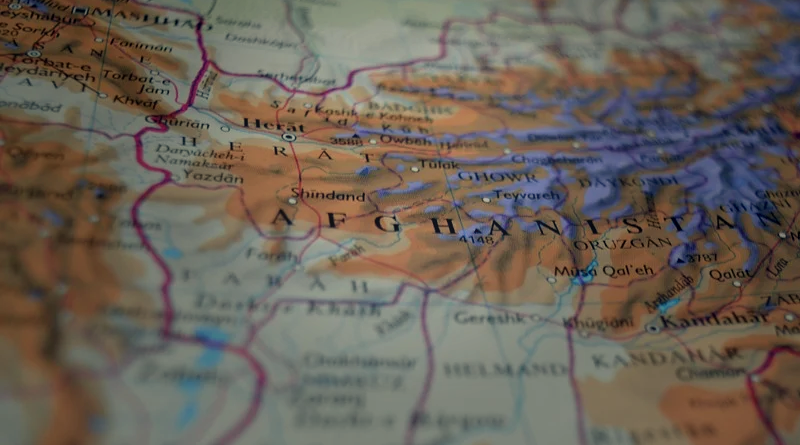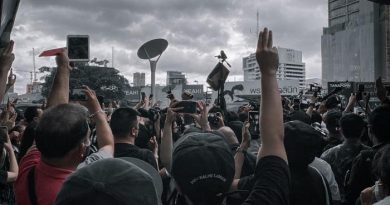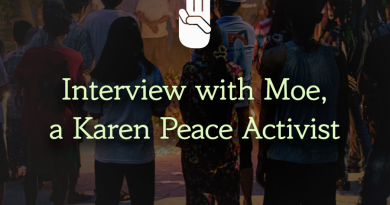With Afghanistan That Is So Far Away, How Do We Establish a Relationship?
Mr. Yoo Jung-gil (Director of the Green Buddhist Research Institute of the Korean Federation of Buddhist Environment Solidarity/ Former head of Kabul Support Team in Afghanistan, Jungto Society<JTS>)
1. First, please introduce yourself and your activities in Afghanistan.
I am currently the director of the Green Buddhist Research Institute of the Buddhist Environment Solidarity. I’m a board member of JTS Eco-Buddha. In Afghanistan I was engaged in emergency relief works and development cooperation projects for four years from 2002 to 2005. For emergency relief activities, winter clothing and blankets were provided to Kabul and Kandahar Bamiyan. And as a development cooperation activity, we provided food support to IDP Refugee Camp in Kandahar, and built about 60-70 tent schools to support children’s meals and teacher training. In addition, I supported schools, public health centers, and the construction of several bridges in a village called Sakkardara in the north of Kabul, and provided children’s uniforms and books.
2. Please tell us briefly about Afghanistan’s history and culture, politics and religion.
Afghanistan is an inland country. It borders six countries nearby: Iran, Pakistan, Turkmenistan, Uzbekistan, Tajikistan, and China. It is a country that everyone must go through to pass from the West to the East or from the East to the West. The Soviet Union desperately wanted Afghanistan in order to get a floating port in the South. So there were many foreign invasions. Britain, the Soviet Union, the United States and the world’s other largest powers also invaded Afghanistan, but eventually failed due to the fierce resistance. That’s why some say it is a tomb of the great powers.
It is a country with alpine levels known as the Roof of the World, the Pamir Plateau and the Hindu Kush Mountains, so it is very easy for guerrillas to work. It is a country with a really strong ethnicity. They are individually very kind and naive people with a pre-modern culture and a tradition of sincere hospitality to the guest, “Pashtunwali.”
Afghanistan is a multi-ethnic country. The Pashtun, the main pillar of the Taliban, is 42%, but there are the Tajiks (27%) and the Uzbek people (9%), and the Hazaras (Mongolians like us, 9%) who live in the Bamiyan region. In particular, unlike others who are mainstream Sunni Islam in Afghanistan, the Hazaras belong to the Shiite Islam line from Iran. The Taliban are hostile enough to treat Shiites distrustfully as if they are a form of paganism and not Islam. So they killed each other brutally. During the Taliban government, the 13 years’ civil war among the regional forces such as the Pashtuns, the Tajiks, the Hazaras and the Uzbeks was more horrible than the war with the Soviet Union in the past.
3. What was the relationship between the Taliban and the US?
In fact, it is the US that has brought up Al-Qaida and the Taliban today. Through Pakistan, the US has provided weapons and military supplies to them. But the people who had been raised by the US in opposition to it now. Currently, the border between Pakistan and Afghanistan is called the Durand Line. The border was drawn 100 years ago, but the Afghan government does not recognize it. There are more than 55 million Pashtuns living on the southern border, 40 million in Pakistan and 15 million in Afghanistan. They ignore each other’s borders and go back and forth from time to time. This is why if the Taliban fled to Pakistan, they could not attack Pakistan across borders, making it virtually impossible for the US to annihilate them.
4. There are many reports that the Taliban regime suppresses women’s rights and religious freedom. What do you think is the task of the Taliban regime from the perspective of peace and human rights?
The anti-human rights policy of the Taliban’s ruling period 20 years ago (1996-2001) was really serious. Men had to grow beards, and women could not go out without their husbands or fathers. And when they go out, they have to use a burqa covering their whole body with only a net over their eyes only. As women’s education was banned, women’s schools were of course crushed, and even boys’ schools with many female teachers had to be closed, so the educational problem was serious.
Women were murdered in honor-killings by fathers and brothers, banned from music and dancing, and there were anti-human rights laws such as the death penalty by stoning and punishment by cutting off hands and feet. Moreover, as the Taliban regime has been engaged in anti-cultural vandalism including the 2001 bombing of two Bamiyan Great Buddha statues, part of the world’s cultural heritage, it is raising serious concerns worldwide. But it is not because they’re Islam. In order to understand their culture in depth, it is necessary to see Islam and tribal traditional culture separately. In the case of Korea, even 50 years ago such male-centered culture as the “domination of men over women”, when wives had to be “submissive to their husbands”, and the “3 principles women must follow” existed. We know that women’s suffrage in Christian countries such as Europe and the US was realized less than 100 years ago, and it was only 30 years ago that the apartheid system in South Africa was abolished. The Taliban culture is due to such a feudal culture that has not been modernized, and it should not be confused with the assumption that this is due to the religion of Islam. Their culture, which has not yet been modernized, should be understood as it is but also expected to change.
5. Tell us about the Taliban’s theocracy and what are their priorities for restoring the trust of the international community?
They can be said to be a revolutionary government that dreams of theocracy. However, if they want to achieve a revolution like Iran did, they have to create a strong self-reliance and independent social system that does not rely on the outside world. And they must have allies that support their revolutionary government. China and Pakistan were the top supporters of the Taliban government. However, it is questionable they will continue to support the Taliban if they strengthen the revolution based on the theocracy. Otherwise, they will have to follow an internationally open model like Pakistan.
In the past, the Taliban were theological students and they were “the subjects of resistance”, who did not know well the international situation and modernization, and their fundamentalism was not problematic to themselves. But now they are “the subjects of construction” who need to create a new country. In the past, their main income came from the southern states of Kandahar or Helmand where 80% of the world’s opium was produced. But now the Taliban should not do this any longer as they must become a normal state. They need to create an independent economic system, trade with other countries fairly, and receive overseas support and cooperation. They should not avoid the task of creating a country that complies with the global standard. In particular, the food crisis will be serious, and problems such as foreign currency supply and demand and mass unemployment will become serious, and in the end, it will be difficult for them to overcome these crises without international cooperation. Perhaps a few years later, they will ask our help, and we will have to be ready to cooperate with them.
6. In what ways will Afghanistan of the Taliban government make constructive changes in the future?
It is the women’s rights issue that has emerged as the key problem in the world. At least, they should ensure a similar status to their women that is guaranteed in other open Islamic countries. Then, they need to gradually ensure the other rights such as the freedom of expression, assembly and association. They need to revive women’s education and involve women in various occupations and duties. What matters is that it is the traditional religious law called “Sharia” that moves them. So it is important not to force change according to the Western standards, but to cooperate in interpreting Sharia laws so that they apply to the extent that will lead to an internal reformation. Turkey cab be a template.
After that, I think that international cooperation to support change will be necessary. But let me spell out that it is not a constructive development when they are embraced in predatory capitalism. But it is crucial that international society helps them become a normal country that can achieve the independent economy and culture. Afghanistan is a multi-ethnic country. Trying to create a unified country has led to a terrible civil war, I think that it is a better option to create a federal state in which the different ethnic groups cooperate peacefully.
7. There are Afghans who came to Korea last August. Who are these people?
The Taliban government has announced that they would not retaliate against foreign NGO activists. However, this announcement is hard to trust. In addition, private retaliation or violence in distant regions cannot be controlled by the central government. In fact, as it happened during the Korean War, there are many people wearing armbands and going around the village to compete with the Taliban for loyalty, causing intimidation and private terrorism. As a result, the family of the staff I know has been pointed out and threatened. And young people in their 20s are forced into the Taliban army, and if they refuse, they may be tortured or their families may be killed. From the Taliban point of view, it is clear that the Korean government and NGOs are also on the side of the US, and those who have cooperated with Korea are in great danger.
So on Aug. 20, 106 Korean civic groups issued a statement in front of the Ministry of Foreign Affairs, urging the Korean government’s prompt action. Surprisingly, the Korean government quickly brought 390 Afghans to Korea as “special contributors” on Aug. 26 in an extraordinary way called Operation Miracle. It’s a really good thing. Most of these are people who helped Korea at the Korean Embassy and KOICA hospital just before the withdrawal. They are the most likely to be attacked by the Taliban revolutionary government. In the case of the US, more than 20,000 people who helped them were moved to the US, and most countries, including the United Kingdom, France, and Germany, evacuated those who were clearly at risk of life. It is natural for a civilized country to evacuate them.
8. There is still a lot of controversy over the refugee issue in Korea. In fact, how should we relate to them in the future? Also, how can civil society cooperate with Afghanistan for their constructive development in the future?
First of all, we have to help them have a soft landing. There was not much controversy in Korea as the whole world brought their supporters to their countries, but regarding the refugee issue, it is time we have to overcome the exclusive monolithic illusion of a Korea based on pure-bloodism. Korea is already the world’s 10th largest economy, and it means that we carry a tenth of the responsibility for global challenges. Protecting the environment or receiving war refugees cannot be left only to the US or EU countries, we are all responsible.
Currently, 7.5 million overseas Koreans live abroad. They are descendants of those who wandered as refugees intentionally or unintentionally since the end of the Joseon Dynasty. They only managed to survive thanks to the hospitality of the countries that embraced them. Today we are in a position to take such responsibility as we aim to realize peace and co-existence in the global community.
It may be difficult because it is a chaotic period, but in a few years, the time will come for Afghanistan to ask for help from the global society. I would like to ask our civil society to proactively prepare for that time. (The end)
- Edited and translated by Shin, Seung-min




